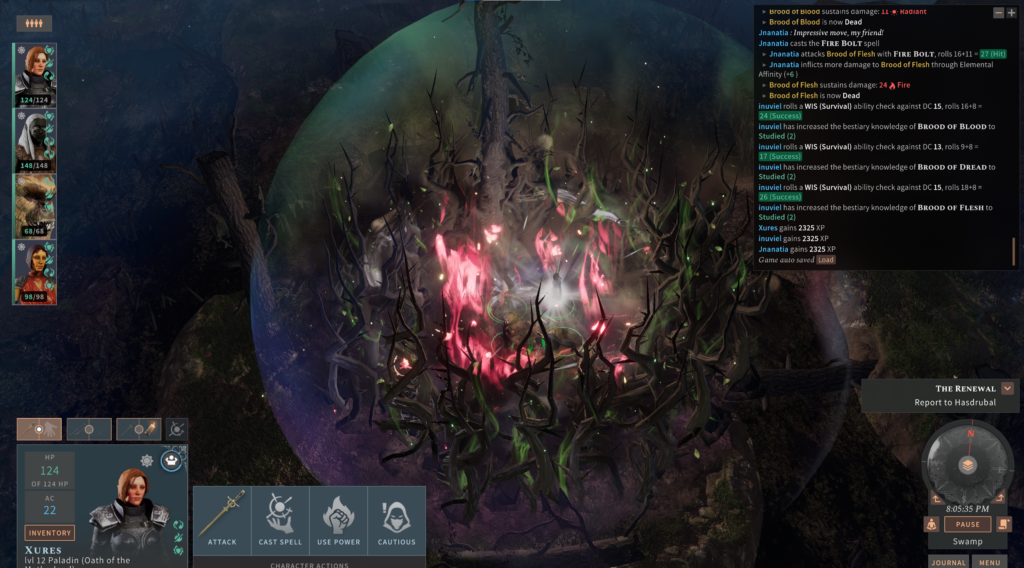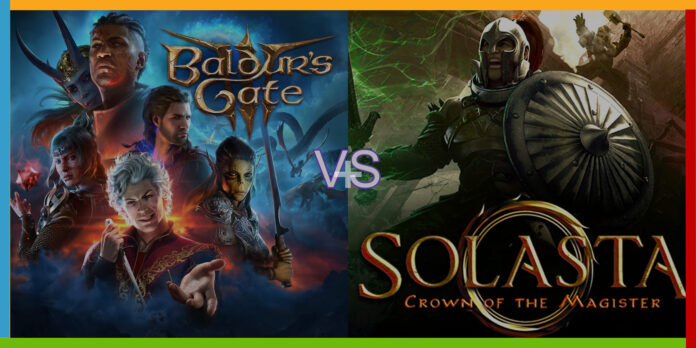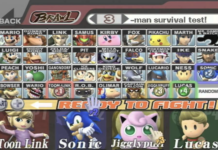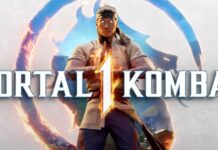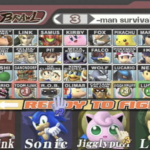Solasta: Crown of the Magister is a game developed by an independent studio called Tactical Adventures, and it’s the result of a Kickstarter campaign. Some of the resulting product is somewhat expected: it certainly lacks some of the polish that Baldur’s Gate 3 has right out of the gate. But as someone who has over 150 hours in Solasta, and has just been able to sink about twenty into BG3 so far, I’d like to take a moment to talk about what Solasta does really well that BG3 ought to consider adding in.
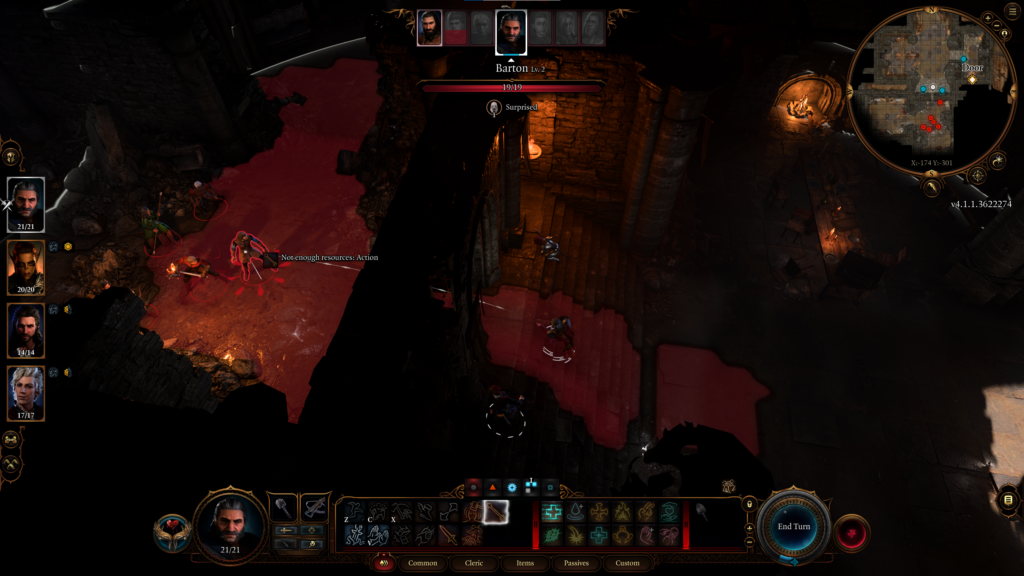
Readied Actions
In 5e D&D, the system BG3 and Solasta are both based on, characters have the option to ready an attack or action. What this means is that you can set a condition, and when that condition occurs, the action you describe takes place. In an actual TTRPG, the possibilities for this are as vast as players are creative, but in a video game, some streamlining has to take place.
In Solasta, characters can ready an attack for if/when a baddie gets in range. Once they do the character automatically executes that attack. This is critical for play styles that revolve around surprising enemies and drawing them into a trap or bottleneck. You can position your melee fighters on either side of a door, say, and then lure the baddies through it. Your melee fighters are ready with attacks, and often they can take out enemies before they have a chance to act with this strategy.
Sadly, Larian seems to have decided readied actions were to complicated to add in, so they eliminated them entirely. This has had a huge detrimental impact to the combat, in my opinion. It means that players who prefer to prep and plan combat scenarios have lost one of their best tools. And given that Solasta implemented it so simply, it seems like a no-brainer.
Dodging
In D&D 5e, and Solasta, a character can use their action to dodge. This means that until the start of their next turn, all attacks against them have disadvantage, which is huge in preventing damage. Of course, it also means you can’t use your action to attack, and typically in 5E, the best way to prevent damage is to cause as much of it as soon as possible. However, there are still plenty of situations where I want a character to dodge.
For example, if I have a cleric who is primarily focused on buffing and healing the other characters, I want to make sure that character gets hurt as little as possible. Using dodge can be an effective technique. You throw up Bless on your three damage dealers, then you get far away and dodge so that you don’t risk losing that spell when you’re attacked.
Furthermore, there’s one class in particular that suffers disproportionately with a lack of dodge. Monks, those wise naked pummeling machines that they are, have an ability where they can use Ki to dodge as a bonus action, so they can still attack on their turn while improving their survivability. Monks are a controversial class, with some saying they are far too weak, but when they are played well they can really shine as a support and tank type character. Being able to dish out some damage while avoiding it is really nice, but in BG3 they lose that entirely. In Solasta, it works as it does in the TTRPG, and it’s awesome.
The Grid
I get that having a grid pattern on the ground in a game might ruin a little immersion, but given how fundamental a mechanic movement and line of site is for a tactical turn based game like BG3, I can’t for the life of me figure out why they didn’t include it, or at least make it an option. In Solasta, at the start of your turn, you can easily see all the squares you can move to with your regular movement, and even more if you choose to dash.
This makes setting up combos and abilities much more reliable. In BG3, I find myself frequently having to reload because what I thought I was doing was not actually what I was doing.
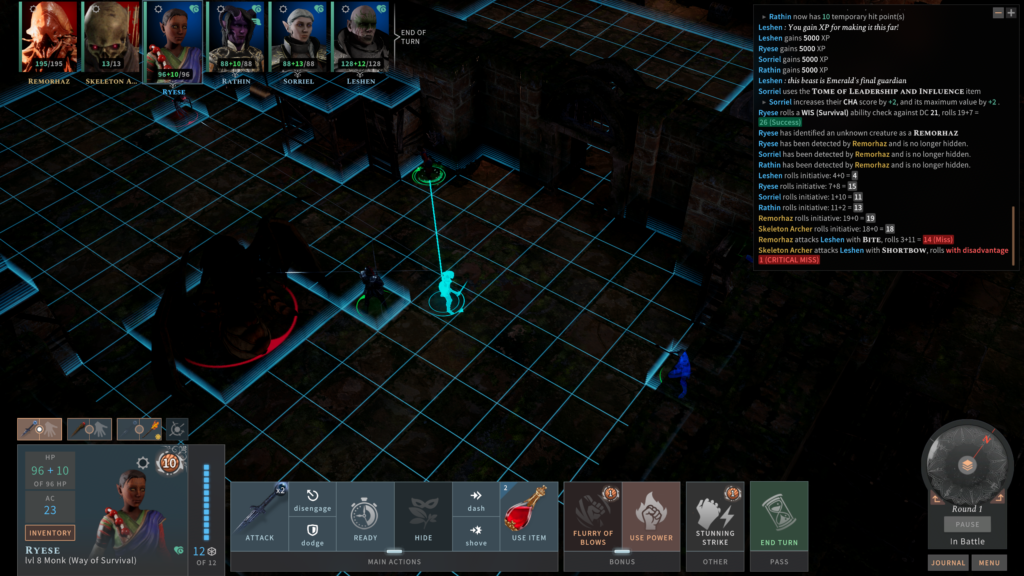
Line of Sight Indicators for Ranged Attacks/Spells
Added onto the last point, one thing that Solasta does extremely well is showing you which enemies you’ll be able to see from each position you could move to. If I simply hover my mouse over a spot I could move to, it will show which enemies I could see/attack from that position. This is critical for setting up combos, ability synergies, and just general tactical combat.
UI/UX
I find the BG3 interface needlessly confusing. I’ll admit that this might be partly due to me having so much more time in Solasta, but even so, I think it’s true that BG3 could learn a thing or two from the way Solasta implemented their user interface. D&D can be daunting because it’s a bit complicated. Yes, the fifth edition is more streamlined than the fourth, but even so, compared to other tactical video games, it can seem like a lot. You have four different action types, all of which have unique rules and parameters, and just understanding it all is difficult. Displaying all that info is understandably even harder.
Before playing Baldur’s Gate 3, I thought Solasta‘s UI was fine, but not anything special. But I took for granted how it just works. It takes a little to get used to, but once you do, you’re flying. Maybe 2-3 hours of gameplay into Solasta, I had it down. After twenty or so hours of Baldur’s Gate 3, I’m still confusing myself around which things to find where. Don’t get me wrong, the Baldur’s Gate 3 interface looks cool, but it appears they prioritized form over function in this case.
Areas where Baldur’s Gate Shines
It’s not all bad news for BG3, though. When it comes to things like dialogue, plot, setting, characters, and visuals, BG3 is absolutely stunning and better developed than Solasta, in my opinion. The story in Solasta is fine, but lacks some of the polish that a studio like Larian is able to provide.
Should You Still Get Baldur’s Gate 3?
Ultimately, I still think BG3 is worth getting and playing. First off, it’s genuinely fun, warts and all. Secondly, there are so few well-made games out there like this, that showing support for the genre is a must for me. Besides, Larian is an incredible studio which has made waves for its refusal to include things like micro-transactions in its games (looking at you, Microactivizzard).
So yes, if you like turn-based tactical fighting games with interesting characters and cool stories, then definitely get Baldur’s Gate 3. But you know what else? Maybe go pick up Solasta: Crown of the Magisters, too. If you get the bundle, with all DLC, it comes to roughly the same price as BG3, and you get three campaigns out of it. On top of all that, Solasta goes up to level 16, whereas BG3 only goes up to 12. Hopefully they release some updates in the future that increase that, but only time will tell.
For now, I’ll definitely be happy diving into BG3 more, while taking a break here and there to keep enjoying Solasta as well. I mean, check out how cool Solasta can be:
